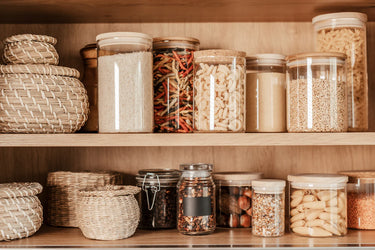Knowing The Answers To These 5 Common Kitchen Questions Will Make You A Better Cook

Cooking can be overwhelming. There’s hot stuff bubbling on the stove, sharp knives to contend with, and it can feel like every vegetable needs to be chopped in a different way. Don’t sweat it. There’s a reason cookbooks and food websites exist: most recipes are too complicated to keep in your head. Outsourcing knowledge to these sources is a smart move. But some questions are worth remembering when you’re in the kitchen so you’re not slowed down by googling simple cooking questions. We’ve got you covered with the answers to 5 common kitchen questions that will make you a better cook:
How many ounces are in a quart?
A quart is a 4-cup measurement, and each cup has 8 ounces. This means that there are 32 ounces in a quart. You’ll often see quarts called for when there are large amounts of liquid in a recipe. For instance, stock is often called for by the quart. Most brands of store-bought stock are sold in quart-sized containers, but of course if you’re using homemade stock, that doesn’t help you when measuring. By the way, a pint is half a quart, so just 2 cups. That means that there are 16 ounces in a pint.
What’s the difference between a saucepan and a pot?
Though it’s totally fine to use the words interchangeably (it won’t change the taste of your food), a saucepan is smaller than a pot and has a long handle. Generally used for smaller quantities, like making rice or steaming a small amount of vegetables, saucepans are also great for making caramel, melting butter, setting up a double boiler, or reheating leftovers. Pots for home cooking tend to be at least 5-quarts in size and can range up to 8-quarts and 10-quarts), and usually have two handles on either side for easy handling. Use a pot for bigger batches of food, like soups, stews, braises, and deep frying.
Baking vs. broiling
While both baking and broiling use the oven, they make use of different heating elements and intensities. Broiling uses only the upper heat element of the oven (or the top of a broiling drawer) to direct intense heat at food. It’s good for things that need to be just melted or browned (as in melted cheese on top of mac and cheese) or quickly cooked (like thin fish fillets). Because broiling can char or burn food very quickly, it’s important to keep an eye on it while using the broiler. Baking uses temperatures from 170º to 400º F with circulating air. These temperatures are considered moderate (as compared to roasting) and are well-suited for cakes, breads, pies, and other baked goods, or anything you want to cook evenly over a longer period of time. Casseroles, large vegetables, and frittatas are all great foods to bake rather than broil or roast.
Can you put a pan in the oven?
The term pan is quite vast. A rimmed baking sheet (often called a baking pan) is well-suited to the oven. Same goes with a roasting pan. But whether or not you can put a sauté pans (often called a frying pan or skillet) in the oven depends on how they’re made. HexClad’s pans are all oven-safe up to 500° thanks to their hybrid stainless steel design. Other oven-safe materials include cast iron and aluminum. Do not put pans with rubber handles, plastic elements, or most nonstick pans in the oven.
What is the difference between baking soda and baking powder?
Both baking soda and baking powder are common ingredients in baking. Mix them up, though, and you’re likely to end up with a kitchen disaster. Baking soda is a single ingredient: sodium bicarbonate. This leavener interacts with acidic ingredients in batter or other foods and produces carbon dioxide, which causes lift. It can also speed up browning reactions and add color and flavor to the recipes it’s used in. Baking powder contains both sodium bicarbonate and the acid needed to react and cause that carbon dioxide-induced lift. Most baking powders are double-acting, which means that they react when combined with moisture (as in the batter) and again when they encounter heat (in the oven or other heat source). These result in lighter baked goods than the ones that use baking soda alone.





